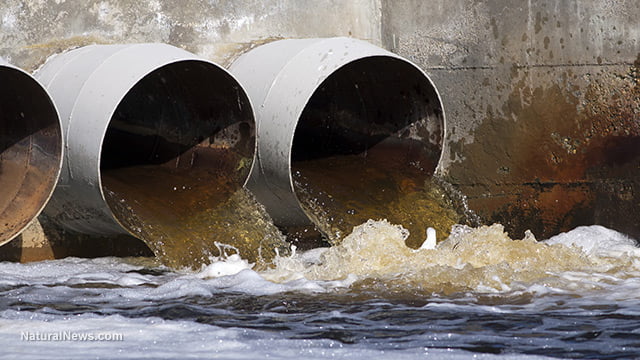Wastewater Discharge Into Streams can Lead to Rapid Antibiotic Resistance, Bacterial Infections and Disease

Discharges from wastewater treatment plants (WWTPs) may be a major contributor to the evolution of antibiotic resistance in the wild, according to a study partially funded by the European Regional Development Fund.
Bacteria naturally possess an intrinsic resistance to toxic chemicals, including antibiotics, and new resistance may also develop naturally through mutation. But scientists agree that widespread overuse of antibiotics has rapidly accelerated the evolution of antibiotic resistance, by killing off bacteria without resistance and strongly favoring those that possess it to pass their genes on to future generations. The process has been further accelerated by a bacterial ability known as “horizontal gene transfer,” which allows bacteria to swap genes with each other, even between different species.
Drug resistance four times more common downstream
It has been known for some time that humans and other animals treated with antibiotics do not metabolize the entire drug, and that a biologically significant amount then passes back into the environment along with their waste. These trace amounts of chemicals cannot be removed by WWTPs. In the new study, the researchers sought to test whether – as many scientists have proposed – this can actually lead to the spread of antibiotic resistance among bacteria later exposed to this treated wastewater.
The study was performed in Spain’s Tordera River Basin, which receives input from WWTPs and numerous, well-separated locations. Researchers collected bacterial samples from “river biofilms,” the layers of microbial slime that form on rocks, plants and other surfaces within rivers. These samples were then tested for the presence of genes conferring resistance to major families of antibiotics commonly used in human medicine, including fluoroquinolones, macrolides and sulfonamides.
The researchers found that WWTPs were responsible for several changes to the natural characteristics of the four streams tested. Downstream of WWTPs, the stream flow, water conductivity, nitrogen content and phosphorus content of the water was higher, relative to samples collected upstream. In addition, there was a significantly higher prevalence of antibiotic-resistant genes in samples taken downstream of WWTPs. For example, a gene conferring resistance to the popular antibiotic was four times more prevalent in downstream biofilms than in upstream ones.
Antibiotic resistance genes were found at elevated levels as far as 1 km downstream of WWTPs. This could indicate that drug-resistant bacteria are actually being discharged from the WWTPs and floating downstream. It might also mean that a high concentration of antibiotics in discharged wastewater is causing the evolution of drug-resistant bacteria downstream of WWTPs, with those bacteria and their genes then spreading downstream from that point. Alternatively, there might be additional sources of wastewater discharge downstream of the WWTPs that the researchers were not aware of.
Environmental laws inadequate
A press release from the Environment Directorate General of the European Commission draws attention to several implications of the findings. First, the press release emphasizes the key finding of the study: that discharges from WWTPs are likely contributing to the accelerated evolution of antibiotic resistant bacteria. It also notes that some of this evolution may be taking place within river biofilms themselves, which may provide an ideal setting for horizontal gene transfer. The authors also suggest that river biofilms could be further studied as honest indicators of pharmaceutical pollution in surface water ecosystems.
The press release notes that wastewater discharges might, in some cases, raise antibiotic levels above the established environmental quality standard (EQS) set by the European Union, and that in such a case, member states would be responsible for lowering those levels. WWTP discharges might cause other changes in streams requiring member state action.
But, the press release notes, EQS are set solely based on levels of chemicals that cause acute poisoning. They do not take into account the specific threat posed by antibiotics, that of accelerating the evolution of drug resistance.
The press release notes that a change in the laws regulating antibiotic levels in water may be called for.
Sources for this article include:
Environmental-Expert.com
NaturalNews.com
NaturalNews.com
Science.NaturalNews.com








